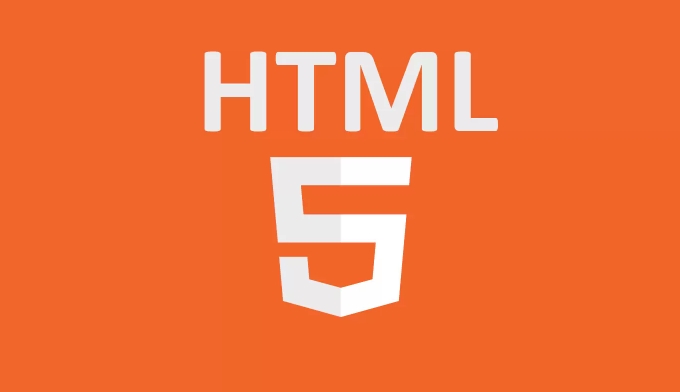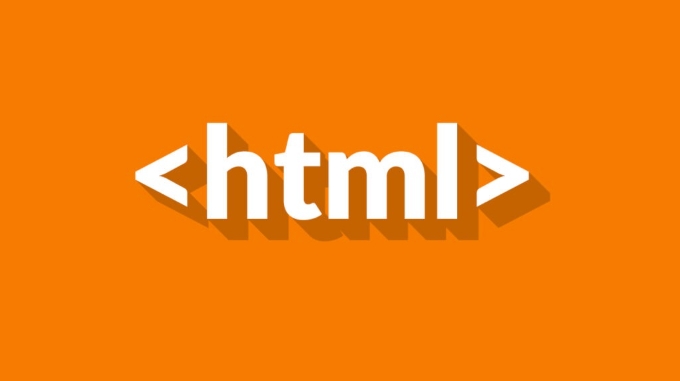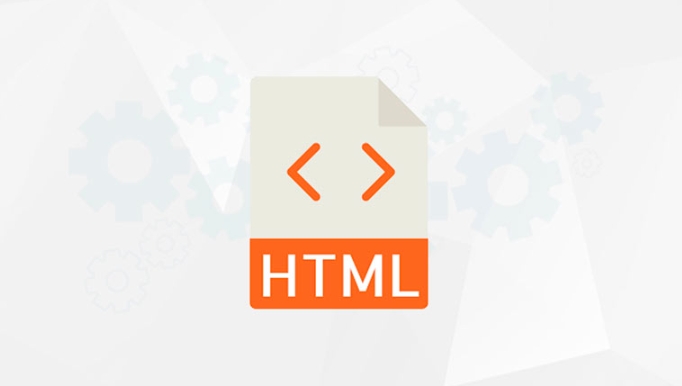WebRTC is a technology that allows browsers to establish direct peer-to-peer connections for video calls, voice chats, and data sharing. It requires no plug-ins or external software and is part of HTML5. Its working principle includes: 1. Exchange metadata through a custom signaling server; 2. Use STUN/TURN server to traverse NAT and firewalls; 3. Negotiate media types and encoding methods. The key components are: 1. getUserMedia() to get the camera and microphone; 2. RTCPeerConnection to process audio and video streams; 3. RTCDataChannel to send any data. Common challenges include cross-browser compatibility, the need to implement signaling mechanisms on your own, and security design issues. The basic process of establishing a call is: 1. Create a connection and request media access; 2. Send and receive signaling messages; 3. Transmit media data directly.

WebRTC (Web Real-Time Communication) is a technology that allows browsers to establish direct peer-to-peer connections for real-time communication, such as video calls, voice chats, and data sharing — all without needing plugins or external software. It's part of HTML5 in the sense that it's a browser API integrated into modern web standards.

How WebRTC Works Behind the Scenes
At its core, WebRTC doesn't rely on a central server to handle media streams. Instead, it sets up a direct connection between two browsers (peers). But before that can happen, there's some coordination involved:
- Signaling : Peers exchange metadata like network addresses and supported codes through a custom signaling server.
- NAT/ Firewall Traversal : WebRTC uses STUN servers to discover public IP addresses and TURN servers to relay traffic if a direct connection isn't possible.
- Session Control : Once connected, peers negotiate what kind of data they'll send and how they'll encode it.
It might sound complex, but most developers don't deal with the low-level parts directly — just the JavaScript APIs exposed by the browser.

Key WebRTC Components You'll Use in HTML5
When you're working with WebRTC in your web app, these are the main pieces you'll interact with:
-
getUserMedia(): This gets access to the user's camera and microphone. -
RTCPeerConnection: Handles the actual audio/video streaming between peers. -
RTCDataChannel: Allows for sending arbitrary data (like text or files) directly between browsers.
For example, if you want to show a user their own webcam feed, you'd use getUserMedia() to get the stream and attach it to a <video></video> element.

Common Challenges When Using WebRTC
Even though WebRTC simplifies real-time communication, there are a few common hurtles:
- Cross-browser compatibility : While most modern browsers support WebRTC, there are subtle differences in implementation.
- Signaling is not built-in : You have to build or integrate your own signaling mechanism using something like WebSocket or Firebase.
- Security concerns : Permissions and encryption are handled automatically, but managing who connects to whom still requires careful design.
Also, if you're behind a corporate firewall or NAT, sometimes you'll need a TURN server to act as a fallback route — which may involve extra cost or setup.
Basic Flow of Setting Up a Call
If you're building a simple video chat, here's how things usually go:
- One user clicks "Call" — their browser creates an RTCPeerConnection and asks for media access.
- The offer is sent via the signaling server to the other user.
- The receiver accepts, creates their own connection, and sends back an answer.
- Once both sides have exchanged info, the video starts flowing directly between them.
This process handles everything from call setup to media transmission.
Basically, WebRTC gives you powerful tools right in the browser — no extra software needed. But setting it up correctly takes attention to detail, especially around signaling and connectivity.
The above is the detailed content of What is WebRTC in HTML5?. For more information, please follow other related articles on the PHP Chinese website!

Hot AI Tools

Undress AI Tool
Undress images for free

Undresser.AI Undress
AI-powered app for creating realistic nude photos

AI Clothes Remover
Online AI tool for removing clothes from photos.

Clothoff.io
AI clothes remover

Video Face Swap
Swap faces in any video effortlessly with our completely free AI face swap tool!

Hot Article

Hot Tools

Notepad++7.3.1
Easy-to-use and free code editor

SublimeText3 Chinese version
Chinese version, very easy to use

Zend Studio 13.0.1
Powerful PHP integrated development environment

Dreamweaver CS6
Visual web development tools

SublimeText3 Mac version
God-level code editing software (SublimeText3)
 Adding drag and drop functionality using the HTML5 Drag and Drop API.
Jul 05, 2025 am 02:43 AM
Adding drag and drop functionality using the HTML5 Drag and Drop API.
Jul 05, 2025 am 02:43 AM
The way to add drag and drop functionality to a web page is to use HTML5's DragandDrop API, which is natively supported without additional libraries. The specific steps are as follows: 1. Set the element draggable="true" to enable drag; 2. Listen to dragstart, dragover, drop and dragend events; 3. Set data in dragstart, block default behavior in dragover, and handle logic in drop. In addition, element movement can be achieved through appendChild and file upload can be achieved through e.dataTransfer.files. Note: preventDefault must be called
 Using ARIA attributes with HTML5 semantic elements for accessibility
Jul 07, 2025 am 02:54 AM
Using ARIA attributes with HTML5 semantic elements for accessibility
Jul 07, 2025 am 02:54 AM
The reason why ARIA and HTML5 semantic tags are needed is that although HTML5 semantic elements have accessibility meanings, ARIA can supplement semantics and enhance auxiliary technology recognition capabilities. For example, when legacy browsers lack support, components without native tags (such as modal boxes), and state updates need to be dynamically updated, ARIA provides finer granular control. HTML5 elements such as nav, main, aside correspond to ARIArole by default, and do not need to be added manually unless the default behavior needs to be overridden. The situations where ARIA should be added include: 1. Supplement the missing status information, such as using aria-expanded to represent the button expansion/collapse status; 2. Add semantic roles to non-semantic tags, such as using div role to implement tabs and match them
 Securing HTML5 web applications against common vulnerabilities
Jul 05, 2025 am 02:48 AM
Securing HTML5 web applications against common vulnerabilities
Jul 05, 2025 am 02:48 AM
The security risks of HTML5 applications need to be paid attention to in front-end development, mainly including XSS attacks, interface security and third-party library risks. 1. Prevent XSS: Escape user input, use textContent, CSP header, input verification, avoid eval() and direct execution of JSON; 2. Protect interface: Use CSRFToken, SameSiteCookie policies, request frequency limits, and sensitive information to encrypt transmission; 3. Secure use of third-party libraries: periodic audit dependencies, use stable versions, reduce external resources, enable SRI verification, ensure that security lines have been built from the early stage of development.
 Integrating CSS and JavaScript effectively with HTML5 structure.
Jul 12, 2025 am 03:01 AM
Integrating CSS and JavaScript effectively with HTML5 structure.
Jul 12, 2025 am 03:01 AM
HTML5, CSS and JavaScript should be efficiently combined with semantic tags, reasonable loading order and decoupling design. 1. Use HTML5 semantic tags, such as improving structural clarity and maintainability, which is conducive to SEO and barrier-free access; 2. CSS should be placed in, use external files and split by module to avoid inline styles and delayed loading problems; 3. JavaScript is recommended to be introduced in front, and use defer or async to load asynchronously to avoid blocking rendering; 4. Reduce strong dependence between the three, drive behavior through data-* attributes and class name control status, and improve collaboration efficiency through unified naming specifications. These methods can effectively optimize page performance and collaborate with teams.
 Using HTML5 Semantic Elements for Page Structure
Jul 07, 2025 am 02:53 AM
Using HTML5 Semantic Elements for Page Structure
Jul 07, 2025 am 02:53 AM
Using HTML5 semantic tags can improve web structure clarity, accessibility and SEO effects. 1. Semantic tags such as,,,, and make it easier for the machine to understand the page content; 2. Each tag has a clear purpose: used in the top area, wrap navigation links, include core content, display independent articles, group relevant content, place sidebars, and display bottom information; 3. Avoid abuse when using it, ensure that only one per page, avoid excessive nesting, reasonable use and in blocks. Mastering these key points can make the web page structure more standardized and practical.
 HTML5 video not playing in Chrome
Jul 10, 2025 am 11:20 AM
HTML5 video not playing in Chrome
Jul 10, 2025 am 11:20 AM
Common reasons why HTML5 videos don't play in Chrome include format compatibility, autoplay policy, path or MIME type errors, and browser extension interference. 1. Videos should be given priority to using MP4 (H.264) format, or provide multiple tags to adapt to different browsers; 2. Automatic playback requires adding muted attributes or triggering .play() with JavaScript after user interaction; 3. Check whether the file path is correct and ensure that the server is configured with the correct MIME type. Local testing is recommended to use a development server; 4. Ad blocking plug-in or privacy mode may prevent loading, so you can try to disable the plug-in, replace the traceless window or update the browser version to solve the problem.
 Drawing Graphics and Animations using HTML5 Canvas
Jul 05, 2025 am 01:09 AM
Drawing Graphics and Animations using HTML5 Canvas
Jul 05, 2025 am 01:09 AM
HTML5Canvas is suitable for web graphics and animations, and uses JavaScript to operate context drawing; ① First add canvas tags to HTML and get 2D context; ② Use fillRect, arc and other methods to draw graphics; ③ Animation is achieved by clearing the canvas, redrawing, and requestAnimationFrame loops; ④ Complex functions require manual processing of event detection, image drawing and object encapsulation.
 Embedding video content using the HTML5 `` tag.
Jul 07, 2025 am 02:47 AM
Embedding video content using the HTML5 `` tag.
Jul 07, 2025 am 02:47 AM
Embed web videos using HTML5 tags, supports multi-format compatibility, custom controls and responsive design. 1. Basic usage: add tags and set src and controls attributes to realize playback functions; 2. Support multi-formats: introduce different formats such as MP4, WebM, Ogg, etc. through tags to improve browser compatibility; 3. Custom appearance and behavior: hide default controls and implement style adjustment and interactive logic through CSS and JavaScript; 4. Pay attention to details: Set muted and autoplay to achieve automatic playback, use preload to control loading strategies, combine width and max-width to achieve responsive layout, and use add subtitles to enhance accessibility.






